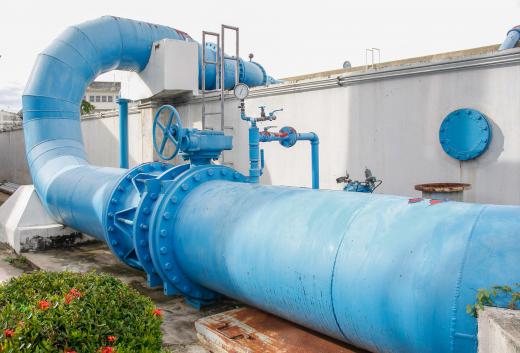A settling basin is a type of structure, usually a man made tank or pond that is designed for the purpose of removing sediment and other particulates from water, through the action of gravity. They can vary greatly in size depending upon the amount of sediment in the water, average particle size, the volume of water to be treated, and the rate at which water flows through the system. Settling basins are used by many kinds of facilities, including mining concerns, fish farms, and waste treatment facilities.
Scientists and engineers use a specific set of equations to design a settling basin, taking into account variables such as particle size, flow rate, and concentration of foreign material. Each settling basin has certain features that are common to all such structures. Some of these features perform a specific function while others are basic structural elements.

Each settling basin must have an inflow and outflow point. Water enters the basin at the inflow point, and the cleaned water exits the system at the outflow. The basin itself is divided into zones. The inlet zone is near the inflow and is usually an area of turbulence. The outlet zone is the area near the outflow and is usually a long weir, or dam, just below the standard surface level of the basin itself.
In between the inlet and outlet zones, and making up the majority of the basin, are the settling zone and the sludge zone. Both occupy the same horizontal area, but the sludge zone is at the bottom, and the settling zone is above it. Sediments and other particles settle out of the water and accumulate in these areas. The sludge zone must be carefully monitored, and the basin must be shut down and cleaned when the sludge accumulates to a certain level, which depends on the size and design of the individual basin. Treatment and sediment removal in settling basins is usually only one step in water treatment as no settling basin can completely remove 100% of all foreign matter.
Removal of sediment and other particles from water is a common need in many operations. Waste treatment, aquaculture, and mine trace systems are just a few places where a settling basin may be found. In a small aquaculture system, the basin may be as small as a large bathtub, but in waste treatment or mine slurry treatment facilities, it may be very large with basins the size of Olympic swimming pools not uncommon. Some may be even larger.
